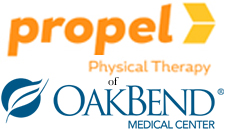“I have had tendonitis for 6 months. Why does it still hurt?”
Let’s first quickly discuss tendons. By definition, a tendon connects muscle to bone and transmits the force the muscle produces. So, anywhere there is a muscle, there is a tendon. Common sites of tendon injuries occur at the ankle (Achilles), knee (patellar tendon), shoulder (rotator cuff), and elbow (golfer’s, tennis). Most often, tendinitis results from overuse/inadequate recovery, a drastic change in intensity or type of activity, or biomechanical issues.
By definition, the ending “–itis” refers to inflammation. Inflammation is the 1st stage of healing, but often gets a bad rap. Inflammation is good and necessary; without it, the body cannot heal itself. The problem arises when the body gets stuck in the inflammatory phase and there is improper healing.
So, tendinitis describes a recent injury that is less than a week old and is often the result of overuse or a change in the type or intensity of activity. Simply refraining from the painful activity can typically resolve the symptoms. However, many will “push through” the pain and the condition worsens to the point they can no longer perform the activity they love. Unfortunately, this is when most seek medical attention and physical therapy.
Left untreated, the structure of the tendon changes, becoming less effective at transmitting forces, which creates pain. Under microscope, the once shiny, white healthy tendon will now look brown and “gunky”, a sign of degeneration. This “chronic inflammation” of the tendon is termed tendinosis.
What does this mean? If it is true tendinitis and just started hurting this week, return to activity is much quicker if you stop doing what hurts. If this has been an issue for some time, the recovery process will take longer. So, the distinction between tendinitis and tendinosis is important and will change the treatment plan and prognosis.
At Propel Physical Therapy, we typically treat tendonitis with relative rest – cycling instead of running, etc., decreasing exercise intensity – basically, if it hurts, don’t do it. Gentle, pain-free stretching is usually sufficient to help the tendon fibers re-organize.
Unfortunately, most people do not seek medical help and physical therapy until the issue is now tendinosis. The good news is this is treatable and you will be able to return to activities you enjoy. At Propel Physical Therapy, we utilize a variety of treatments based on the current research evidence and years of clinical experience. Various manual therapy techniques, dry needling, and a specific type of exercise targeting the specific tendon have been shown to be the most beneficial. The video above demonstrates Eccentric Exercise for Achilles Tendinosis.
If you fall into one of these categories, please contact us at Propel Physical Therapy to see how we can help you keep moving forward.


Leave A Comment
You must be logged in to post a comment.